So! A little while ago I promised to explain the following statement in more depth:
“Diamond’s new order minimums increase is going to hurt the DM worse than Marvel’s Heroes World Debacle did. It is essentially the beginning of the end for the Direct Market, in my estimation. Specifically because Diamond Comics Distributors is a monopoly.” – Me, a couple weeks back.
Then I got too busy to follow-up. Since then Bill Schanes at Diamond has followed-up with a couple of interviews, and most-everyone has weighed in on it. But since it’s about 6 hours before I have to get up to go to work, I figure now is the perfect time to, you know, offer my thoughts.
FACTS:
– Diamond’s job is to serve the Direct Market, and specifically the network of comic book specialty stores that make up the direct market.
– Diamond’s goal is to make money at this.
– Diamond does this by buying comics at a deep discount from publishers, and selling them to the retailers at a lesser discount.
– Somewhere along the line, they calculated what it costs to solicit and ship a book to those retailers versus what it makes them, and came up with a dollar figure for their comfortable-profit-zone. I do want to note that this order minimum has never been expressed as “the break even point”, this is just where they make a profit on the book they’re comfortable with.
– Recently, they raised that minimum so that you have to sell $6250 or so of comics, retail, to get distributed. That effectively means anything not in their “top 300”, most months. The books just never show up in stores, despite being ordered.
– They announced these increases under the increasingly specious cover of “economic downturn.”
– They did this and it was pointed out that their sales were DOWN 4% IN 2008!
I’d like to point out that sales were down 4% after numerous increases, year-over-year, for the last 5 years at least. Here’s what ICV2 had to say about the comics industry in 2007:
“It is clear that overall 2007 was a very strong year for comic sales (up 7% compared with 2006), graphic novels (up 18%), and combined sales (up 9%), though the increases in comic and combined sales not quite as strong as in 2006, during which comics (when compared with 2005) sales rose 14%, while graphic novels were up 8% and the combined total was up 13%.” – ICv2
OPINION:
So… what? The combined total sales for comics and graphic novels was up at least 13% in 2007 over 2006, and this is not just the Diamond numbers but I’d be shocked if they weren’t right-in-line. So now comics slip by 4%, putting them what, a few points above 2006, right? 2006 where we actually delivered books that we solicited? Hmm.
I doubt their stated reasoning, flat out. This is all, at best, suspicious. Year-over-year growth in the midst of the graphic novel and manga boom, there’s a slight slip, and now it’s time to cut stuff? Huh.
FACTS:
– Let’s give Diamond the benefit of the doubt on the economic necessity of their moves. Why not.
– After all, Diamond cut the salaries of numerous staff in January. Seriously.
– Diamond is still a monopoly.
– That’s not just a cute word I’m throwing around here… Diamond seized power in a time of uncertainty, eliminating all other national and local specialty distributors of comics and graphic novels by signing prohibitive exclusivity agreements that meant that the vast majority of published comics and graphic novels could, realistically, only be distributed by them. There is no other distributor of comic book periodicals, at least non-returnably (there is the newsstand, but there are lots of reasons that has nothing to do with anything…).
– These were really sweet deals they offered to companies too, to sign exclusive and ditch doing direct-sales to retailers, or work with other distributors. It had nothing to do with the bookstore market, or sales to customers (like companies with a webstore), or any other form of sales. These were exclusives For The Comic Market, designed to make Diamond the only distributor for the comic market.
OPINION:
Fine, let’s… let’s pretend for a moment that this is all okay too. Sure. Why not. Capitalism, right?
FACTS:
– Diamond made themselves the only outlet for comic book periodicals, and graphic novels. Diamond IS the Direct Market.
– They made retailers dependent on them for the vast majority of their business. Diamond IS the Direct Market.
– They systematically removed other avenues of sale for publishers through their exclusivity tactics. Diamond IS the Direct Market.
– And now that there are no competitors, and no other avenues, they are dictating stricter and stricter terms to pubs who won’t play ball with them (ie: sign a brokerage agreement, sign an exclusive, sign a contract to have handle their bookstore distribution).
– They admit flat out this will result in the delisting of 20-30 companies in the first month, with more to come.
– Diamond IS the Direct Market. Distribution, publishing, retail.
OPINION:
This is not a good thing. Monoculture is not a good thing, it leaves us susceptible to disease, to being wiped-out entirely.
I have always argued this, and while my arguments haven’t fallen on deaf ears, exactly, many companies have made decisions that embrace a “streamlined” DM, to what I feel will be their eventual detriment… Once you eliminate the bottom, the middle becomes the new bottom. I’m having a hard time seeing how anyone is going to be renegotiating their exclusivity deal with Diamond from a position of anything approaching “strength” in the next few years. Diamond has just told you that they want the low-hanging fruit, and that fruit’s just gonna get lower and lower.
But even more importantly than that: Diamond is pushing content out of the Direct Market.
Let me say that again:
Diamond Is Pushing Content Out Of The Direct Market
We established this way up at the top there, “Diamond’s job is to serve the direct market.” So you tell me, by denying entry to creative people, by setting the minimums above what _all comics_ not in the top 300 can accomplish, and only ‘working’ with their core publishers, how are they serving the direct market?
The only answer that comes to mind is “because this will allow them to continue to exist.” No insider information here, nothing that’s not out in the open, but staff cuts, salary cuts, and big cost cutting? I’m sure New York will be a-twitter.
Because seriously?
If this is not a necessary move, then it’s an incredibly stupid one.
Diamond’s job is to serve the Direct Market, so why are they sending publishers to find other ways to sell their books, ways that aren’t the direct market?
I help run a direct market comic book store, one of the best in the industry. I’m going to be honest with you here: We will weather the storm.
But we’re also on the front lines of indy publishing and retailing: Between my independent comics festival and my indy comics friends and my goddamned zine rack, and our Diamond orders where the back of the catalogue is almost always worth more than Marvel, DC, Image, and Dark Horse combined. The publishers that are going to be the ones that disappear out of the back of the catalogue are ones that we order, and the books that have customers who come to my store specifically for them. So, you know, I know what I’m talking about here.
This move is going to push publishers to produce comics that effectively _can’t_ be sold by Diamond, by the Direct Market. Webcomics, digital print-to-order, print-on-demand, comics with low profit-margins, produced in small numbers, sold directly by the creator to the reader.
And it’s probably going to work.
Already some of the solutions that have been floated for small publishers tout this method. More importantly, more and more comics creators–and I want to stress that many of these people are my friends, this is not anecdotal–are making a living solely through the digital publication and distribution of their work. Either through merch or advertising or other sales. Comics creators have found a successful alternate way of making money doing comics, that has nothing at all to do with comic book stores.
And Diamond has provided the kick-in-the-ass to get more people to follow that path.
Diamond is serving the Direct Market, by encouraging publishers to stay the FUCK OUT of the Direct Market. Sending books that I want to sell, and customers I want to sell them to, to a completely different distribution stream where I don’t make any money.
FACTS:
– The margins on digital-print-to-order and POD books are too poor for the books to be sold competitively through most comic book stores.
– Think that webcomics can work as a “proving ground” for books, only to be embraced by the direct market when they’ve “proven themselves”? Think again! The Direct Market hates webcomics! Check this out:
Johanna Draper-Carlson: Publishers are currently preparing their giveaway titles for Free Comic Book Day (FCBD), which will be on May 3, 2008. Three planned webcomic-related titles won’t be included, though, because even though their publishers participated in previous years, they were rejected for 2008. I’ve interviewed Chris Crosby about his reaction to this decision.
Will you be participating in FCBD this year?
Crosby: Apparently not, as all three titles were rejected by Diamond on the advisement of their FCBD committee. The reason given was “no core title being currently published, or the current books sales not warranting the FCBD promotional support.” … Most of our 3 million+ readers do not read print comic books, not including print collections of webcomics. Not because webcomics are free and webcomic readers are cheap, but because they haven’t yet been exposed to a print comic that interested them enough. When webcomics participate in FCBD, we are actively promoting the event to millions of readers. Those are potential new comic shop customers, assuming you can grab them enough with a title they’ll want to try while they’re in the store. … Since we’re not being allowed to participate in FCBD 2008, we won’t be trying to drive our millions of readers into comic shops this year.
OPINIONS:
Yeah.
I’m not a dullard, I know that the digital revolution is well underway and the paradigm? It’s shifting. But it isn’t shifted, and it’s a little disconcerting to see my largest retail partner pushing content away from my market and into one I can’t touch. I think that’s a WEIRD DECISION TO MAKE.
I’m going to say this flat out, probably the most indefensible part of this whole post, but here goes: Diamond has a responsibility to the market it has created. And that responsibility doesn’t start and stop with making money.
“It is essentially the beginning of the end for the Direct Market, in my estimation.”
Is that hyperbole? I can’t tell. Once upon a time a friend of mine wrote an angry-young-manifesto imploring all who would hear him to tear the direct market to the ground and let something else rise up out of the ashes. I feel like we’re closer to that now than we’ve ever been, but I never thought it would be Diamond doing it. Diamond can’t afford to distribute comic books to comic book stores. Not all comic books of course, just the ones that aren’t superheroes or licensed other-media tie-ins. Or exclusive to Diamond.
No retailer is immune to the effects of this. No publisher (save 2…) is immune to the effects of this. This is going to change the market quicker and in ways that none of you would ever have expected.
And in the end, none of this ensures a healthy Diamond Comics Distributors. We’re all still taking are chances with a distributor that the vast majority of comic retailers and publishers spend great amounts of time ripping-on, in public and private…
Good luck in 2009 everyone.
– Christopher




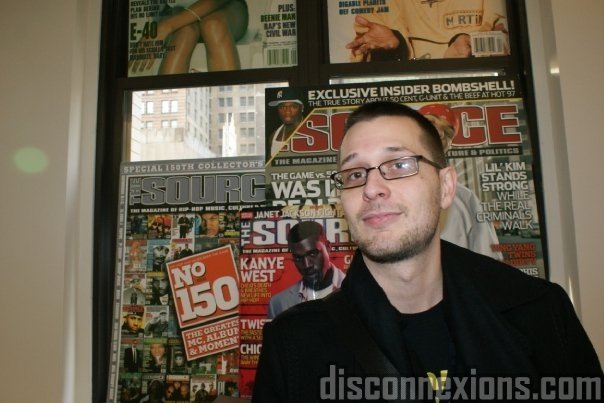

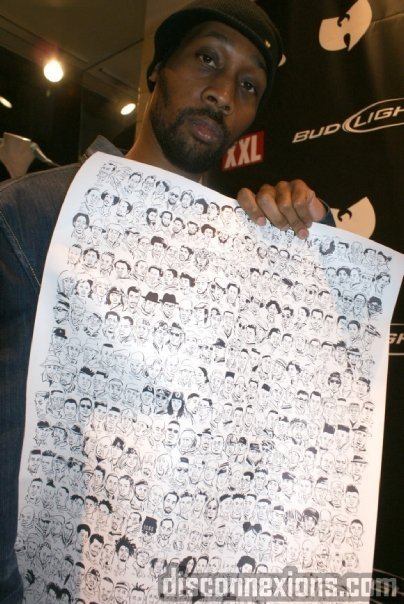

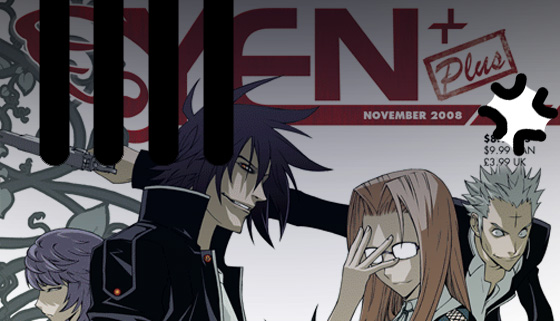
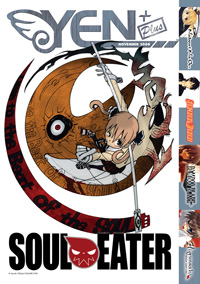 So I said this
So I said this  So, I read
So, I read  Is anyone else worried about the number of books that are coming out right now?
Is anyone else worried about the number of books that are coming out right now?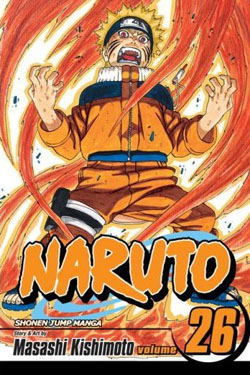 No one knows how the manga market is going to shake out in the next few years, I think that much can be taken as fact. Everyone’s got ideas, informed by both their desires and their fears, but I’ve talked to a lot of people and no one has the magic bullet. There’s a lot going on in North America–war, recession, the cost of gasoline–all of them are big question marks for every retail business. I’m not an economist, I can’t even begin to address how decentralized suburban environments and a lack of public transit infrastructure are going to affect the sales of the serialized adventures of manga heroes and heroines at the local box store. But luckily there’s enough weird shit happening inside the industry itself that I can talk about that instead.
No one knows how the manga market is going to shake out in the next few years, I think that much can be taken as fact. Everyone’s got ideas, informed by both their desires and their fears, but I’ve talked to a lot of people and no one has the magic bullet. There’s a lot going on in North America–war, recession, the cost of gasoline–all of them are big question marks for every retail business. I’m not an economist, I can’t even begin to address how decentralized suburban environments and a lack of public transit infrastructure are going to affect the sales of the serialized adventures of manga heroes and heroines at the local box store. But luckily there’s enough weird shit happening inside the industry itself that I can talk about that instead.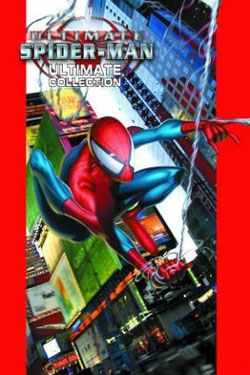 I can’t help but look at this situation from the perspective of a lifelong comics fan who never had his parents throw out his comic collection–who worked in the drinking and the fucking around alongside the adventures of The Transformers, The Uncanny X-Men, The Invisibles, and eventually The Socially Awkward Characters of Adrian Tomine. Superhero comics offer an escape, are modern mythology, and are no more or less immature than professional sports fandom, say the converts. Mike Manley calls them all “babymen” though, fully grown though emotionally immature men who simultaneously crave change and tradition, the illusion of life-altering adventures set against the steady hum of conformity. In short, the Simpsons episodes before and after Barney gave up drinking, because those ones where he’s just got a coffee look fucking weird in syndication. Whatever side of the debate you come down on in the emotional maturity of superhero fans argument, one need only look at the books themselves to see the overwhelming conservatism, tradition, and homogeneity in the monthly superhero fantasy land. It’s a genre where most everyone draws and writes very similar stories, and that’s what makes it surprising when those same fans make the same accusations about manga.
I can’t help but look at this situation from the perspective of a lifelong comics fan who never had his parents throw out his comic collection–who worked in the drinking and the fucking around alongside the adventures of The Transformers, The Uncanny X-Men, The Invisibles, and eventually The Socially Awkward Characters of Adrian Tomine. Superhero comics offer an escape, are modern mythology, and are no more or less immature than professional sports fandom, say the converts. Mike Manley calls them all “babymen” though, fully grown though emotionally immature men who simultaneously crave change and tradition, the illusion of life-altering adventures set against the steady hum of conformity. In short, the Simpsons episodes before and after Barney gave up drinking, because those ones where he’s just got a coffee look fucking weird in syndication. Whatever side of the debate you come down on in the emotional maturity of superhero fans argument, one need only look at the books themselves to see the overwhelming conservatism, tradition, and homogeneity in the monthly superhero fantasy land. It’s a genre where most everyone draws and writes very similar stories, and that’s what makes it surprising when those same fans make the same accusations about manga.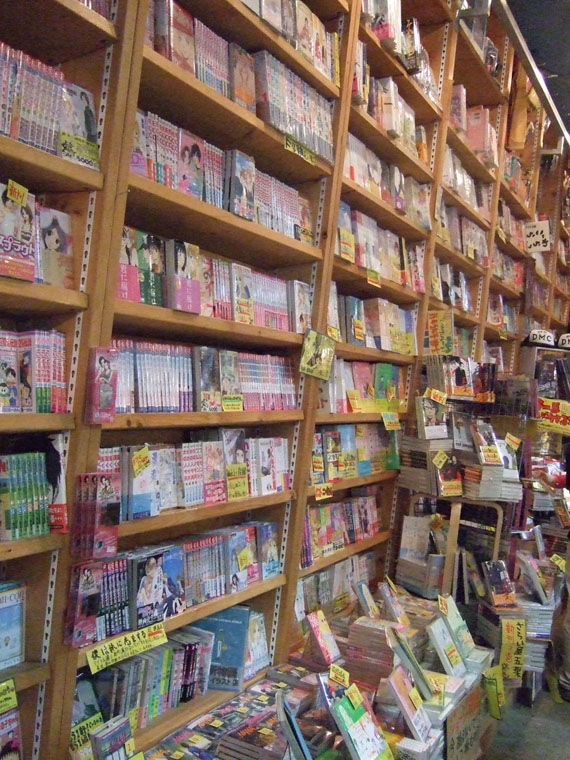
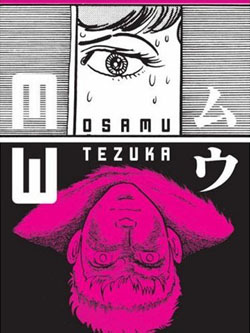 Unfortunately, and despite the best wishes of myself and many of my friends, the answers are not as simple as “more josei manga! more seinen manga! more adult manga!” for a number of reasons. The big one is the differing cultural mores; that the west has all kinds of completely insane hangups about nudity and sexuality, let alone the combination of those things with violence, and while not every manga intended for the 18-and-over set is full of those things, the popular ones are.
Unfortunately, and despite the best wishes of myself and many of my friends, the answers are not as simple as “more josei manga! more seinen manga! more adult manga!” for a number of reasons. The big one is the differing cultural mores; that the west has all kinds of completely insane hangups about nudity and sexuality, let alone the combination of those things with violence, and while not every manga intended for the 18-and-over set is full of those things, the popular ones are. If you look at all of the manga pubs and their output, it becomes clear that each has their own strategy when it comes to attracting the mature reader and keeping them there. DMP offers a bevvy of Yaoi material in vanilla and kinky flavours, releasing just enough 16+ material into the market to keep the girls (and occasional guy) salivating for their 18th birthdays, when they can get to the mature stuff. In fact, the yaoi market might just be the most diverse in terms of age and reach, and its growth from being an ultra-niche fandom into a sizable demographic worth paying monetary attention to has been rapid, and worth noting. While no one in the niche is getting rich, most pubs are keeping their heads above water and behaving ethically. Of particular note is Yaoi Press, a publisher that’s managed to keep the lights on and a steady stream of product released, and they’ve done it without licensing even one book from overseas. It’s a company for fans by fans (a fan who happens to be a pretty savvy businesswoman) that has largely managed to bypass the biases of fandom against “fake manga” and put out quality product that sells to girls and women. That’s pretty impressive, and perhaps a business plan to follow. Over the past few years Tokyopop seems to have recognized the value of broadening their demographic reach, perhaps fearing that they were about to lose the shonen and shoujo markets to their competitors. Their Original English Language Manga efforts (OEL/World Manga) showed a broad, broad reach across age, gender, and race, but the problem with trying to be all things to all people is how often you end up bein’ nuthin’ for no one. Even the most ardent Tokyopop supporter would define their output over the last three or four years as “unfocused.” One wonders what their publishing program would have looked like with stronger lines, with stand-alone graphic novels, with an experienced editorial staff better known for commissioning and developing original work? Maybe we’ll get an opportunity, Tokyopop seems to be refining their line now… but I’ll probably talk about that next time out.
If you look at all of the manga pubs and their output, it becomes clear that each has their own strategy when it comes to attracting the mature reader and keeping them there. DMP offers a bevvy of Yaoi material in vanilla and kinky flavours, releasing just enough 16+ material into the market to keep the girls (and occasional guy) salivating for their 18th birthdays, when they can get to the mature stuff. In fact, the yaoi market might just be the most diverse in terms of age and reach, and its growth from being an ultra-niche fandom into a sizable demographic worth paying monetary attention to has been rapid, and worth noting. While no one in the niche is getting rich, most pubs are keeping their heads above water and behaving ethically. Of particular note is Yaoi Press, a publisher that’s managed to keep the lights on and a steady stream of product released, and they’ve done it without licensing even one book from overseas. It’s a company for fans by fans (a fan who happens to be a pretty savvy businesswoman) that has largely managed to bypass the biases of fandom against “fake manga” and put out quality product that sells to girls and women. That’s pretty impressive, and perhaps a business plan to follow. Over the past few years Tokyopop seems to have recognized the value of broadening their demographic reach, perhaps fearing that they were about to lose the shonen and shoujo markets to their competitors. Their Original English Language Manga efforts (OEL/World Manga) showed a broad, broad reach across age, gender, and race, but the problem with trying to be all things to all people is how often you end up bein’ nuthin’ for no one. Even the most ardent Tokyopop supporter would define their output over the last three or four years as “unfocused.” One wonders what their publishing program would have looked like with stronger lines, with stand-alone graphic novels, with an experienced editorial staff better known for commissioning and developing original work? Maybe we’ll get an opportunity, Tokyopop seems to be refining their line now… but I’ll probably talk about that next time out.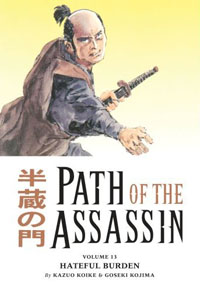 Getting back to publisher strategies for the aging manga market, I feel like Dark Horse was in there first, and has been in their longest, when it comes to manga material for older readers. Unfortunately I feel like that was as a result of their focus on publishing manga that would appeal to the existing North American superhero readership base, a backlist comprised mainly of fantasy and science fiction manga, with a bunch of samurai thrown in for good measure. The current boom in popularity of serialized sci-fi and fantasy on television would seemingly make titles like Eden, Blood+, and Gantz sure-fire hits, but unfortunately the sales on Dark Horse’s seinen (young men) manga seem to have flagged. Eden seems to be under a constant death-watch, and Dark Horse’s horror manga initiative seems to have suffered an untimely end. Even the series that I personally thought had the most potential, Hiroki Endo’s Tanpenshu short story collections, were largely ignored in the market. I kind of have to wonder how many series you can cancel mid-stream before buyers simply stop buying everything, and wait for the serialization to be completed before they pick up a book? That can’t be a healthy strategy for anyone involved, and I hope that whatever steps Dark Horse decides to take with their manga line, they see them through to completion for their own sake…
Getting back to publisher strategies for the aging manga market, I feel like Dark Horse was in there first, and has been in their longest, when it comes to manga material for older readers. Unfortunately I feel like that was as a result of their focus on publishing manga that would appeal to the existing North American superhero readership base, a backlist comprised mainly of fantasy and science fiction manga, with a bunch of samurai thrown in for good measure. The current boom in popularity of serialized sci-fi and fantasy on television would seemingly make titles like Eden, Blood+, and Gantz sure-fire hits, but unfortunately the sales on Dark Horse’s seinen (young men) manga seem to have flagged. Eden seems to be under a constant death-watch, and Dark Horse’s horror manga initiative seems to have suffered an untimely end. Even the series that I personally thought had the most potential, Hiroki Endo’s Tanpenshu short story collections, were largely ignored in the market. I kind of have to wonder how many series you can cancel mid-stream before buyers simply stop buying everything, and wait for the serialization to be completed before they pick up a book? That can’t be a healthy strategy for anyone involved, and I hope that whatever steps Dark Horse decides to take with their manga line, they see them through to completion for their own sake… I have to say that, going forward, it seems like manga for an adult general audience is going to come from Viz. The Viz Signature line seems to be comprised entirely of things I want to read, and on a fairly regular basis. Unfortunately with the end of Drifting Classroom and Golgo 13 and nothing immediately launched to replace them, the regular output in the line is going to be comprised of just Naoki Urasawa’s Monster and Takehiko Inoue’s REAL through this Christmas (and the re-launch of the Vagabond series which will hopefully catch on in a big way)… But the idea behind it is a solid one, the radical notion of presenting works not just using classifications of age or audience but quality is pretty radical in mainstream publishing. That a company is willing to step up and say “This is really good stuff that we’re publishing here, take a look at it,” whilst also trying not to say that anything else they’re publishing is necessarily… bad… heh. It’s kind of neat. That and I was lucky enough to receive an early copy of the first volume of Viz’s edition of REAL and it’s fucking gorgeous, and feels great in the hand. French flaps! Larger size! It looks and feels different than manga for kids, which (alongside the recent releases Tekkon Kinkreet and Cat-Eyed Boy) is a very important step for the publisher. I also think it’s interesting that in talking to Marc Weidenbaum about Viz’s Original English Language publishing initiative, a big part of that conversation was that OEL could very well be what readers go to “next”. With Tokyopop titles like Dramacon, Bizenghast, and Princess Ai all doing well in the market, and being books with a Japanese ‘look’ but with North American cultural mores in mind, this really could be the future. Whatever they end up with will be worth watching.
I have to say that, going forward, it seems like manga for an adult general audience is going to come from Viz. The Viz Signature line seems to be comprised entirely of things I want to read, and on a fairly regular basis. Unfortunately with the end of Drifting Classroom and Golgo 13 and nothing immediately launched to replace them, the regular output in the line is going to be comprised of just Naoki Urasawa’s Monster and Takehiko Inoue’s REAL through this Christmas (and the re-launch of the Vagabond series which will hopefully catch on in a big way)… But the idea behind it is a solid one, the radical notion of presenting works not just using classifications of age or audience but quality is pretty radical in mainstream publishing. That a company is willing to step up and say “This is really good stuff that we’re publishing here, take a look at it,” whilst also trying not to say that anything else they’re publishing is necessarily… bad… heh. It’s kind of neat. That and I was lucky enough to receive an early copy of the first volume of Viz’s edition of REAL and it’s fucking gorgeous, and feels great in the hand. French flaps! Larger size! It looks and feels different than manga for kids, which (alongside the recent releases Tekkon Kinkreet and Cat-Eyed Boy) is a very important step for the publisher. I also think it’s interesting that in talking to Marc Weidenbaum about Viz’s Original English Language publishing initiative, a big part of that conversation was that OEL could very well be what readers go to “next”. With Tokyopop titles like Dramacon, Bizenghast, and Princess Ai all doing well in the market, and being books with a Japanese ‘look’ but with North American cultural mores in mind, this really could be the future. Whatever they end up with will be worth watching.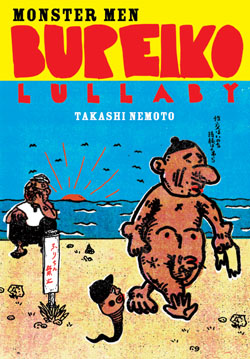 That said, as the market stands right now my heart belongs to the Alternative and Art Comix publishers who are publishing challenging, entertaining, and unique manga. Drawn + Quarterly’s productions of Yoshihiro Tatsumi’s work really are top-of-the-line thanks to copious extras and a beautiful hardcover production, as is their most recent release, the 70s manga that’s equal parts revolutionary student movement and French art film, Red Colored Elegy. Their recently announced 800+ page autobiography of Tatsumi is shaping up to be the book of 2009, and may even succeed to really grab a mainstream audience where his fiction works have not, as North American book buyers tend to embrace autobiography and memoir in comics format quite easily. Of course, Last Gasp’s own manga titles, including the ground-breaking Barefoot Gen and the soon-to-be-released underground manga title TOKYO ZOMBIE are must-buys. I think Last Gasp will be announcing a new Junko Mizuno manga soon too (San Diego!) and given her standing in the fine art and vinyl toy world, that will have a real possibility of breaking through. And PictureBox Inc. seems entirely committed to publishing works that are capital-I Important and then trying to create a market for them, so their upcoming release of Monstermen Bureiko Lullaby should be, if nothing else, very interesting. Oh, and everything Fanfare/Ponent-Mon publishes is worth buying too, every single one. I wish they could get their scheduling and distribution under control, and I think those factors will keep them an ultra-niche publisher until they get sorted out, but Disappearance Diary alone should win them an award entitled “Best gift to a North American manga fan”. Their upcoming release of Jiro Taniguchi’s “Faraway Neighborhood,” should it get the distribution and attention it deserves, could very-well be their breakout book. Keep an eye out for it.
That said, as the market stands right now my heart belongs to the Alternative and Art Comix publishers who are publishing challenging, entertaining, and unique manga. Drawn + Quarterly’s productions of Yoshihiro Tatsumi’s work really are top-of-the-line thanks to copious extras and a beautiful hardcover production, as is their most recent release, the 70s manga that’s equal parts revolutionary student movement and French art film, Red Colored Elegy. Their recently announced 800+ page autobiography of Tatsumi is shaping up to be the book of 2009, and may even succeed to really grab a mainstream audience where his fiction works have not, as North American book buyers tend to embrace autobiography and memoir in comics format quite easily. Of course, Last Gasp’s own manga titles, including the ground-breaking Barefoot Gen and the soon-to-be-released underground manga title TOKYO ZOMBIE are must-buys. I think Last Gasp will be announcing a new Junko Mizuno manga soon too (San Diego!) and given her standing in the fine art and vinyl toy world, that will have a real possibility of breaking through. And PictureBox Inc. seems entirely committed to publishing works that are capital-I Important and then trying to create a market for them, so their upcoming release of Monstermen Bureiko Lullaby should be, if nothing else, very interesting. Oh, and everything Fanfare/Ponent-Mon publishes is worth buying too, every single one. I wish they could get their scheduling and distribution under control, and I think those factors will keep them an ultra-niche publisher until they get sorted out, but Disappearance Diary alone should win them an award entitled “Best gift to a North American manga fan”. Their upcoming release of Jiro Taniguchi’s “Faraway Neighborhood,” should it get the distribution and attention it deserves, could very-well be their breakout book. Keep an eye out for it.